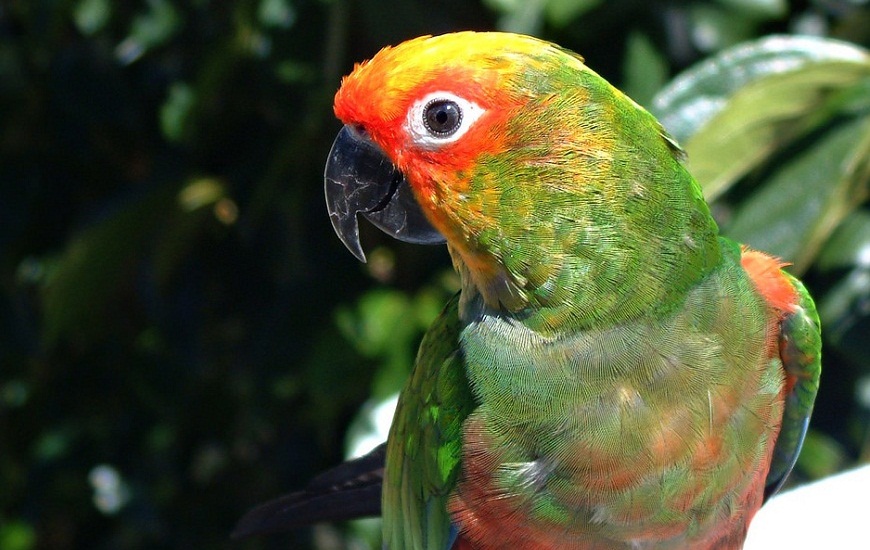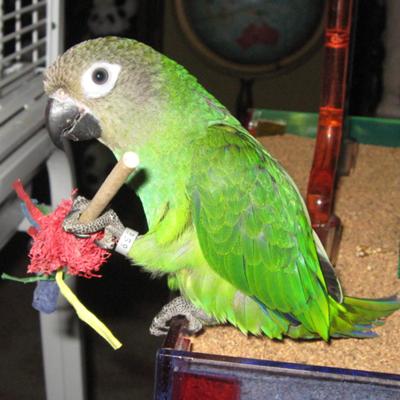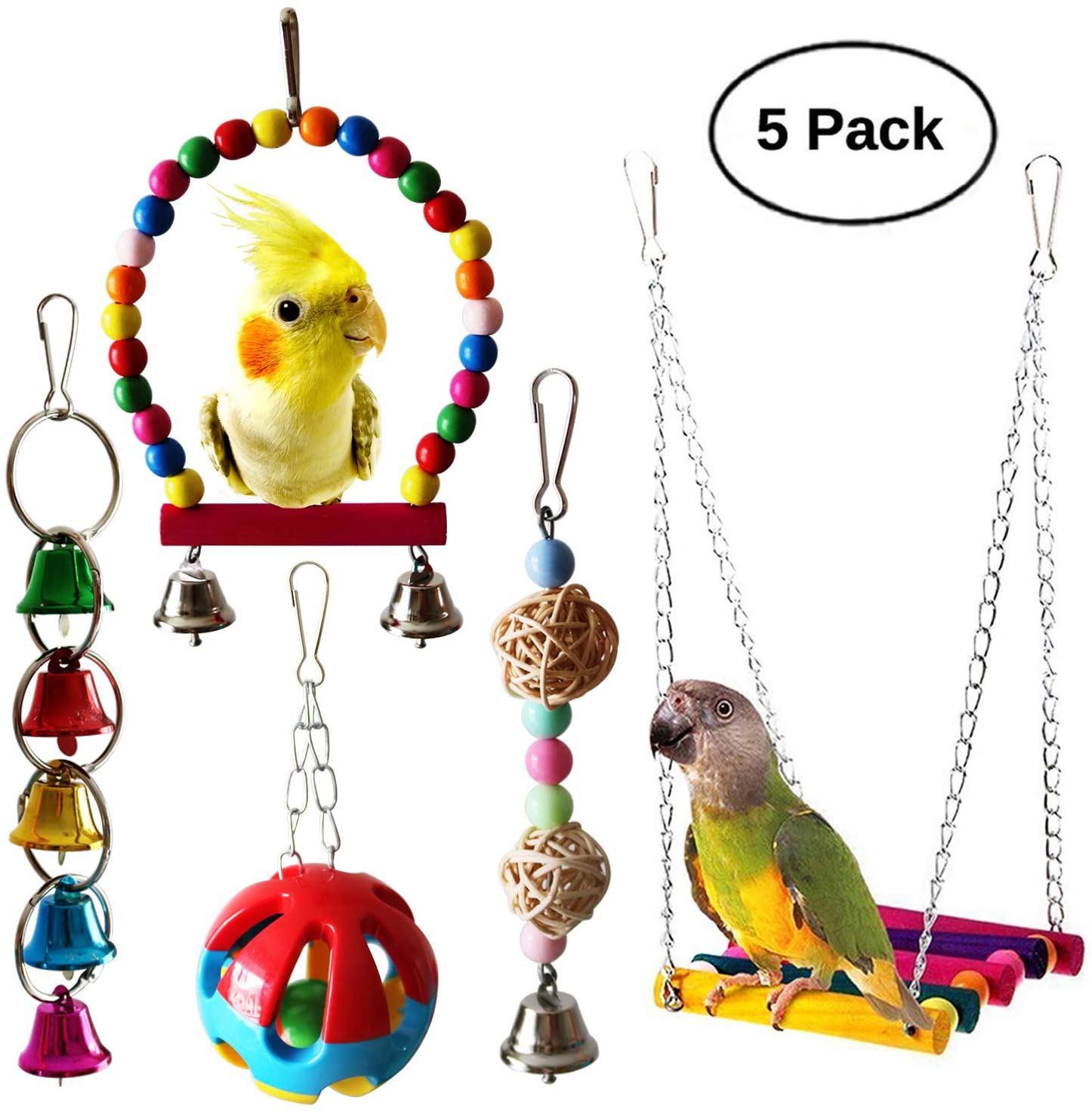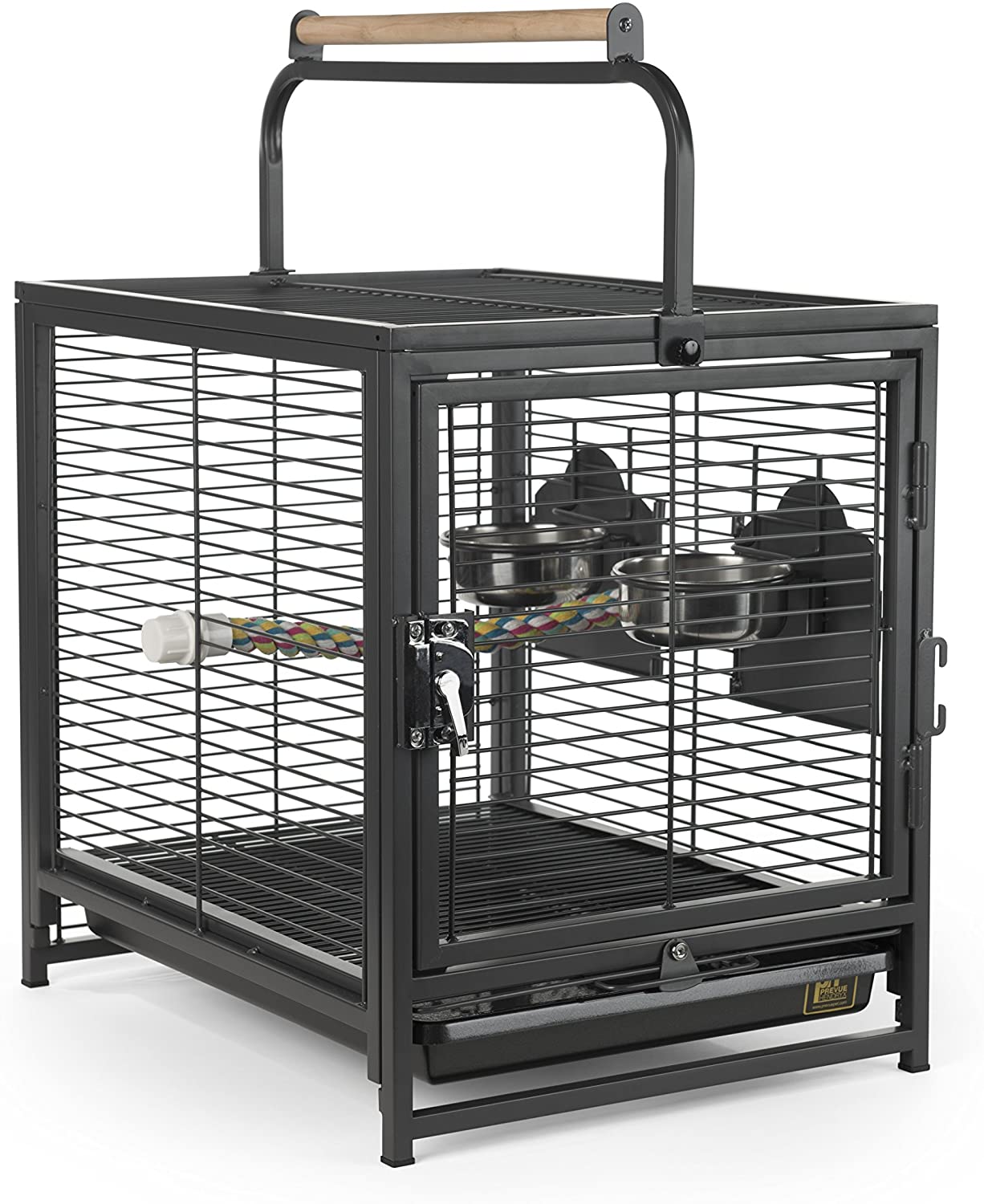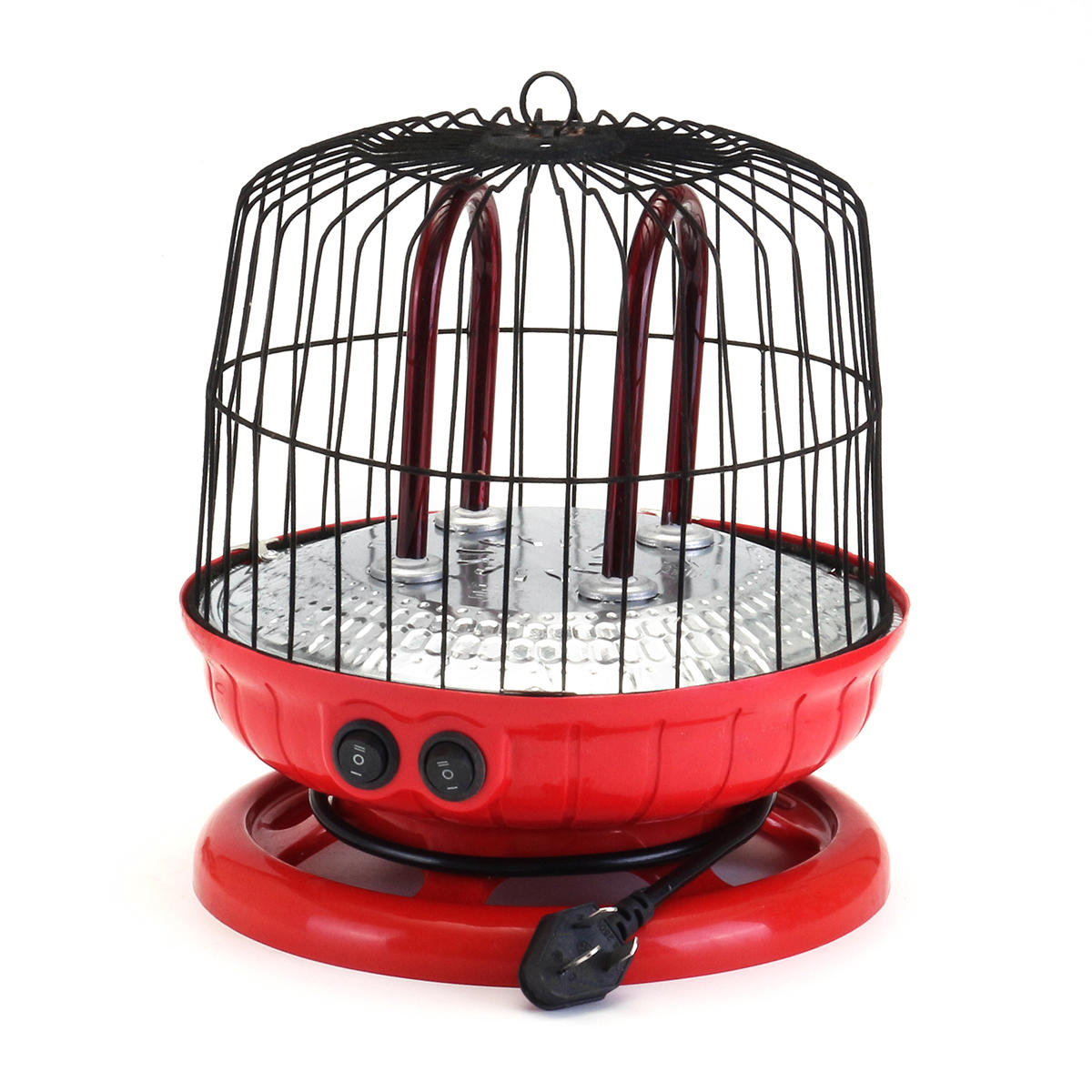The blue-crown conure is one of the larger members of the conure family found in South America. Less exuberant in colors as some of its cousins, it has gained immense popularity in the country as pets over the past couple of decades.
Scientific Classification |
|
| Kingdom | Animalia |
| Phylum | Chordata |
| Class | Aves |
| Order | Psittaciformes |
| Superfamily | Psittacoidea |
| Family | Psittacidae |
| Subfamily | Arinae |
| Tribe | Arini |
| Genus | Thectocerus |
| Scientific Name | Thectocerus acuticaudatus |
Quick Information |
|
| Other Names | Blue-crowned conure, blue-crowned parakeet, Blue-hooded Conure, Blue-capped Conure, Conure à front bleu, Conure à tête bleue, Perriche à tête bleue (French), Aratinga Cabeciazul, Calacante común, Calancate, Calancate Común (Spanish) |
| Size | 14.5in (36.83cm) |
| Weight | 4.9-6.7oz (140-190g) |
| Color |
Green bodies, blue crowns, undersides of the tail are various shades of red, bi-colored beaks, upper-beak is grayish black or horn-colored, lower is black, white eye-ring. Sexually dimorphic, however, dimorphism between genders may be visible only to the most experienced eyes |
| Subspecies |
|
| Distribution | East of Colombia to Argentina |
| Habitat | Savannas, forest edges, and woodlands, they like to avoid forests with high humidity like the Amazon |
| Sounds & Calls | Vocally very active and tend to scream loudly, alarmed birds give out a ‘whreee’ or ‘whraaa’ call, perched or birds in flight make calls like ‘whiii’, ‘wriiii’ |
| Clutch | 3-4 white eggs |
| Incubation Period | 24-26 days |
| Fledging | 52 days after hatching |
| Breeding Age | 2-3 years |
| Lifespan | 25-30 years, some have been known to live for up to 40 years of age |
| Diet | Seeds, nuts, fruits, berries and leaf-buds in its natural habitat |
| IUCN Conservation Status | Least Concern |
As pets
The blue-crowned parakeet is one of the most popular as pets among the conure species, with its popularity graph experiencing a spike since the 1998 movie Paulie. Its playful and intelligent personality has certainly helped its cause for more acceptance from pet owners across the country and elsewhere.
Housing
If you intend to keep your blue-crowned conure inside a cage for extended periods of time, make sure that the cage size is big enough so as to not make the bird feel cooped up. Either way, there should be perches for the bird to sit on and chewable toys provided so that it can enjoy its time alone to its satisfaction. You may also choose to provide nest boxes.
Temperature
Keep the bird away from extreme temperatures that are found near the kitchen, or around the main entrance of the house. Place the cage where it gets some natural sunlight.
Temperament & Behavior
Blue-crowned conures have gentle and affectionate characteristics and like to be in interaction with their owners as much as possible. They are, however, prone to screaming loudly which can annoy your neighbors and indeed yourself. They rarely become aggressive and are not prone to biting, in case they get on the verge of aggression, taking a cue from the body language and preemptive pacification is not much of a hassle.
The blue-crowned has the best talking ability among the conures although its efficacy as such is moderate at best compared to other parrot species.
Because of their playful nature, they can be easily trained to do tricks, albeit with some positive reinforcement.
Feeding
Provide your bird with tropical fruits as regularly as possible, but give it fresh fruits and vegetables on a daily basis. You should also provide them with a diet of seeds and pellets at least thrice a week. Ensure that you vary the diet up from time to time; otherwise, the bird will eventually get bored and physical complications will soon arise.
Care
Trim the nails of the bird every couple of months. Keep a regular check on new feather growth on the wings, and if found, clip them as and when required. They enjoy spray showers of warm water and watching them bathe on their own in a dish of sufficiently warm water is a sight for sore eyes.
Health problems
- Feather plucking,
- Proventricular Dilatation Disease
- Psittacine Beak and Feather Disease
- Psittacosis
- Aspergillosis
- Beak malocclusion
A quick visit to the vet in most of these cases of illness is likely to ensure the well-being of the bird.
Price
A blue-crown conure costs around $800.











